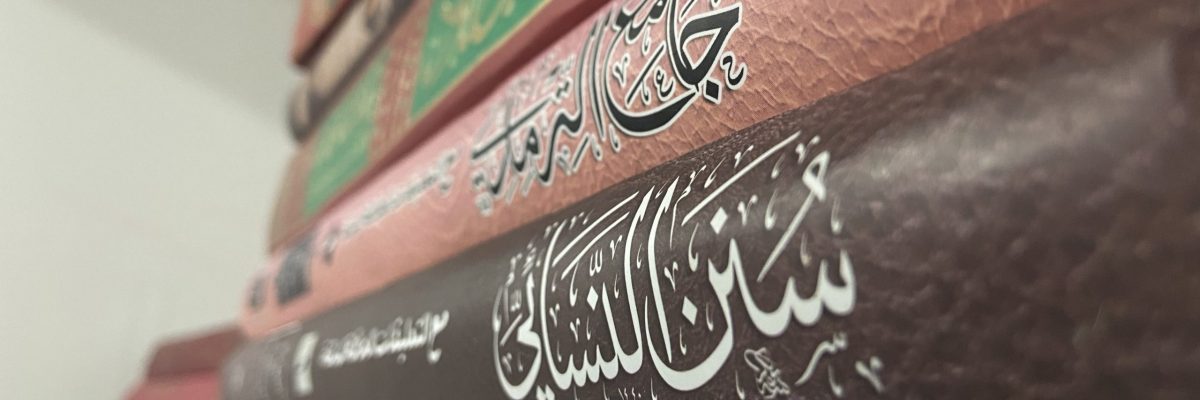Fatwa ID: 06197
Answered by: Maulana Syed Johir Miah
Question:
Salam if you finish praying then see a face on the clothes that were in front of you do you have to pray again?
In the name of Allah, the Most Gracious, the Most Merciful
Answer:
If he has images in his hand and he leads the people, it is not disliked for him to lead the people.
A man was asked about a man who has a tattoo on his hand, is his prayer and imam with him valid or not? He replied, “Yes, his prayer and his imamate are valid without any suspicion.”1
It is not Makruh to prostrate on a rug that has images on which he did not prostrate. 2
It is not Makruh to pray on a rug that has pictures other than the place of prostration. 3
It is disliked for him to have pictures above his head on the ceiling or in front of him or on his shoes. 4
If he wears a garment that contains images, it is Makruh, and it is not Makruh to have a picture other than that of the spirit.5
It is disliked for him to pray with pictures above his head on the ceiling, on his shoes, a hanging picture in front of him, or pictures in the house, and that does not invalidate his Salah.6
If he wears a dress that has pictures on it, it is Makruh.7
It is Makruh to pray with a picture hanging over his head on the ceiling and with pictures on his shoes, or pictures in the house.8
It is Makruh if a person wears a garment with pictures on it, and there is an image above his head, in front of him, or in his shoes, unless it is small, beheaded, or without a soul.9
If he wears a garment that has images it is Makruh because he resembles the one who is carrying an idol and the prayer.10
There is nothing wrong with praying in a house in which there are headless statues. 11
And should there be a picture above his head, behind him, or in front of him or his shoes, unless it is small or beheaded or someone who has no soul, and if he has a furnace in front of him, or a canopy with burning coals, or people who are sleeping, and wiping the forehead with dust that will not harm him during prayer.12
It is disliked to wear clothes that contain images of a spirit and to have an animal image above or behind his head or in front of him.
But, if the picture is small and only looks like the one on dinars, then there is no dislike for that.
Therefore, it is permissible to pray by those who have dirhams with the image of a king.
It is also permissible to pray if the image is large, beheaded, or an image of a non-spirited person, such as trees. 13
Whether it was of the origin or had a head and it was deleted and whether the cut was with a thread, sewed all over the head until no trace was left of it or by washing it, because it is not usually worshipped without the head, and as for cutting off the head from the body with a thread while keeping the head as it is.
It does not negate Makruh, because there are some birds that are enclosed, so cutting is not possible with that.
The matter was fixed to cutting the head, because there is no consideration on removing the eyebrows or the eyes, as they are worshipped without them, and likewise there is no consideration in cutting off the hands.14
In the aforementioned case, you do not have to repeat your Salah.
Only Allah knows best.
Written by Maulana Syed Johir Miah
Checked and approved by Mufti Mohammed Tosir Miah
Darul Ifta Birmingham
1 ثُمَّ قالَ: لَوْ فِي يَدِهِ تَصاوِيرُ ويَؤُمُّ النّاسَ لا تُكْرَهُ إمامَتُهُ اهـ. وفِي الفَتاوى الخَيْرِيَّةِ مِن كِتابِ الصَّلاةِ سُئِلَ فِي رَجُلٍ عَلى يَدِهِ وشْمٌ هَلْ تَصِحُّ صَلاتُهُ وإمامَتُهُ مَعَهُ أمْ لا؟ أجابَ نَعَمْ تَصِحُّ صَلاتُهُ وإمامَتُهُ بِلا شُبْهَةٍ
Raddul Muhtar, Ibn Abidin, 330/1, Darul Fikr, Beirut, Lebanon, 1412 H.
2 فصل فيما لايكره للمصلي -والسجود على بساط فيه تصاوير لم يسجد عليها.
Nurul Idah, 75/1, Al-Maktabatul Asriyyah, 2005.
3 فلا تكره الصلاة على بساط فيه تصاوير في غير موضع السجود.
Fiqhul Ibadaati Alal Mazhabil Hanafi, Najah Halbi, 92/1.
4 ويكره أن يكون فوق رأسه في السقف أو بين يديه أو بحذائه تصاوير
Hidaya, 65/1, Dar ihyat Turath, Beirut, Lebanon.
5 ولَو لبس ثوبا فِيهِ تصاوير يكره ولا يكره تِمْثال غير ذِي الرّوح
Bidayatul Mubtadi, 201/1, Maktaba Wa Matba’ah Muhammad Ali Sabah, Cairo.
6 ويكره أن يصلى وفوق رأسه في السقف تصاوير، أو بحذائه، أو بين يديه صورة معلقة، أو في البيت تصاوير، ولا يفسد ذلك صلاته
Sharh Mukhtasarut Tahawi, Jassas, 529/8, Darul Bashair Al-Islamiyyah, 1431 H.
7 ولو لبس فيه ثوبا فيه تصاوير يكره
Hidaya, 65/1, Dar ihyat Turath, Beirut, Lebanon.
8 وتكره ان يُصَلِّي وفَوق رَأسه بالسقف وبحذائه صُورَة معلقَة اَوْ فِي البَيْت تصاوير
An-Natfu Fil Fatawaa, Sugdee, 811/2, Darul Furqan, Muassisatur Risalah, Amman, Jordan- Beirut, Lebanon, 1404 H.
9 ولبس ثوبٍ فيه تصاوير وأن يكون فوق رأسه أو بين يديه أو بحذائه صورةً إلّا أن تكون صغيرةً أو مقطوعة الرّأس أو لغير ذي روحٍ
Kanzud Daqaaiq, 174/1, Darul Bashaairil Islamiyyah, Darus Siraj, 1432 H.
وفِي الجامِعِ الصَّغِيرِ أطْلَقَ الكَراهَةَ (إلّا أنْ تَكُونَ صَغِيرَةً أوْ مَقْطُوعَةَ الرَّأْسِ أوْ لِغَيْرِ ذِي رُوحٍ) فَإنَّها إذا كانَتْ كَذَلِكَ لا تُعْبَدُ فَلا يُكْرَهُ(قَوْلُهُ أوْ مَقْطُوعَةَ الرَّأْسِ) أقُولُ ومَحْوُ وجْهِها كَقَطْعِ الرَّأْسِ كَما فِي البَحْرِ عَنْ الخُلاصَةِ.
Durarul Hukkam Sharh Ghuraril Ahkam, 109/1, Dar Ihyal Kutub Al-Arabiyyah, Meer Muhammad Kutub Khana, Aram Bagh, Karachi, Pakistan.
10 (ولَوْ لَبِسَ ثَوْبًا فِيهِ تَصاوِيرُ يُكْرَهُ) لِأنَّهُ يُشْبِهُ حامِلَ الصَّنَمِ، والصَّلاةُ
Fathul Qadeer, Ibnul Humam, 416/1, Darul Fikr.
11 ولا بَأْسَ بِالصَّلاةِ فِي بَيْتٍ فِي قِبْلَتِهِ تَماثِيلُ مَقْطُوعَةُ الرَّأْسِ
Mabsoot, Sarakhsee, 210/, Darul M’arifah, Beirut, Lebanon, 1414 H.
12 وأن يكون فوق رأسه أو خلفه أو بين يديه أو بحذائه صورة إلا أن تكون صغيرة أو مقطوعة الرأس أولغير ذي روح وأن يكون بين يديه تنور أو كانون فيه جمر أو قوم نيام
Nurul Idah, 73/1, Al-Maktabatul Asriyyah, 2005.
Maraqiyul Falaah, Page 132, Kadeemi Kutub Khana, Muqabil Aaram Bagh, Karachi.
13 -٢٢ – يكره لبس ثياب فيها تصاوير ذات روح، وأن يكون فوق رأسه أو خلفه أو بين يديه صورة حيوان. أما إذا كانت الصورة صغيرة لا تبدو إلا بتأمل كالتي على الدنانير فلا كراهة في ذلك. لذا تجوز صلاة من معه دراهم عليها صورة ملك. كذلك تجوز الصلاة إن كانت الصورة كبيرة مقطوعة الرأس أو صورة لغير ذي روح كالشجر.
Fiqhul Ibadaati Alal Mazhabil Hanafi, Najah Halbi, 92/1.
14 (قَوْلُهُ أوْ مَقْطُوعَةَ الرَّأْسِ) أيْ سَواءٌ كانَ مِن الأصْلِ أوْ كانَ لَها رَأْسٌ ومُحِيَ، وسَواءٌ كانَ القَطْعُ بِخَيْطِ خِيطَ عَلى جَمِيعِ الرَّأْسِ حَتّى لَمْ يَبْقَ لَهُ أثَرٌ، أوْ بَطَلَيْهِ بِمَغْرَةٍ أوْ بِنَحْتِهِ، أوْ بِغَسْلِهِ لِأنَّها لا تُعْبَدُ بِدُونِ الرَّأْسِ عادَةً وأمّا قَطْعُ الرَّأْسِ عَنْ الجَسَدِ بِخَيْطٍ مَعَ بَقاءِ الرَّأْسِ عَلى حالِهِ فَلا يَنْفِي الكَراهَةَ لِأنَّ مِن الطُّيُورِ ما هُوَ مُطَوَّقٌ فَلا يَتَحَقَّقُ القَطْعُ بِذَلِكَ، وقَيَّدَ بِالرَّأْسِ لِأنَّهُ لا اعْتِبارَ بِإزالَةِ الحاجِبِينَ أوْ العَيْنَيْنِ لِأنَّها تُعْبَدُ بِدُونِها وكَذا لا اعْتِبارَ بِقَطْعِ اليَدَيْنِ
Raddul Muhtar, Ibn Abidin, 648/1, Darul Fikr, Beirut, Lebanon, 1412 H.

